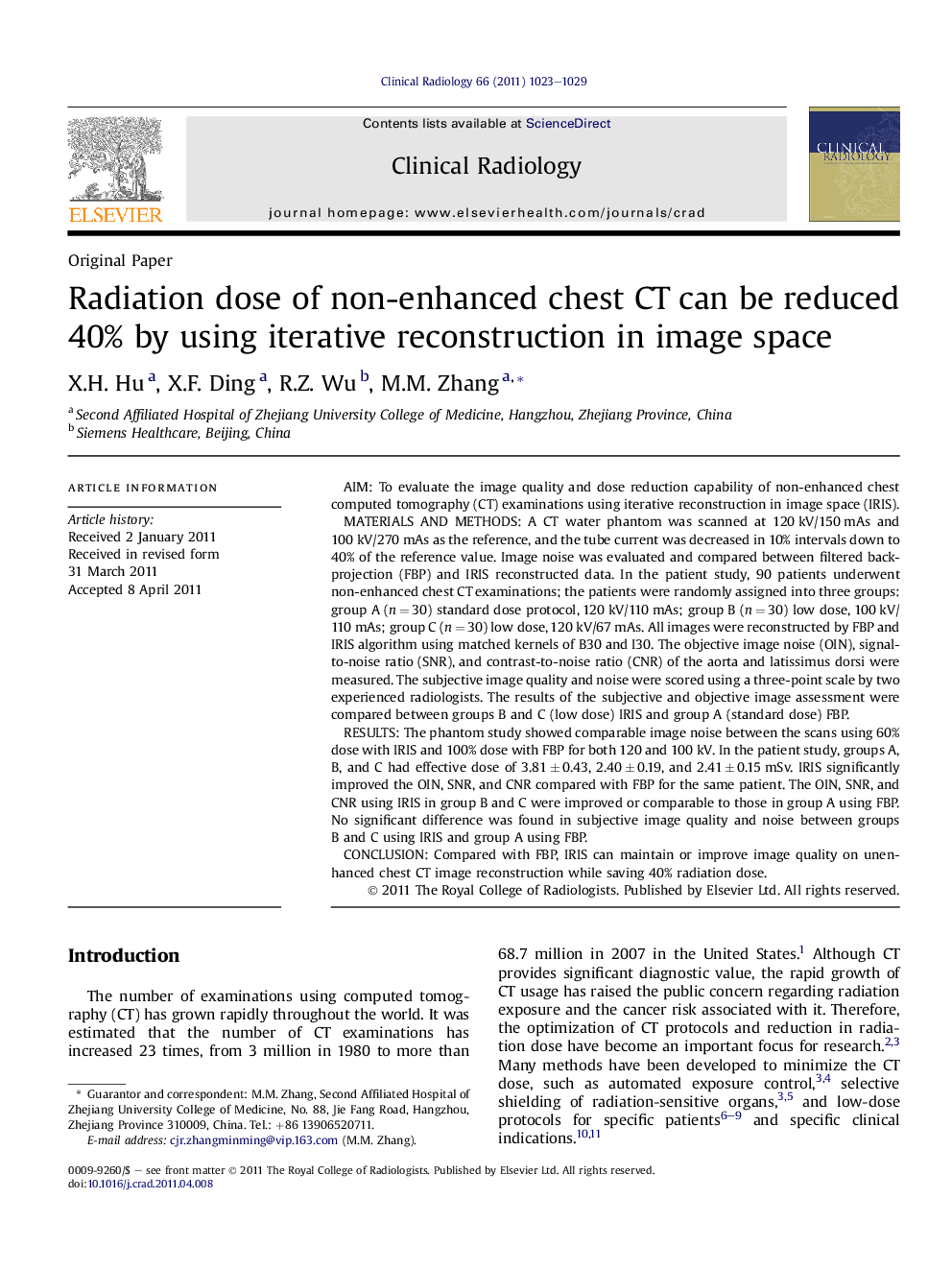| Article ID | Journal | Published Year | Pages | File Type |
|---|---|---|---|---|
| 3981798 | Clinical Radiology | 2011 | 7 Pages |
AimTo evaluate the image quality and dose reduction capability of non-enhanced chest computed tomography (CT) examinations using iterative reconstruction in image space (IRIS).Materials and methodsA CT water phantom was scanned at 120 kV/150 mAs and 100 kV/270 mAs as the reference, and the tube current was decreased in 10% intervals down to 40% of the reference value. Image noise was evaluated and compared between filtered back-projection (FBP) and IRIS reconstructed data. In the patient study, 90 patients underwent non-enhanced chest CT examinations; the patients were randomly assigned into three groups: group A (n = 30) standard dose protocol, 120 kV/110 mAs; group B (n = 30) low dose, 100 kV/110 mAs; group C (n = 30) low dose, 120 kV/67 mAs. All images were reconstructed by FBP and IRIS algorithm using matched kernels of B30 and I30. The objective image noise (OIN), signal-to-noise ratio (SNR), and contrast-to-noise ratio (CNR) of the aorta and latissimus dorsi were measured. The subjective image quality and noise were scored using a three-point scale by two experienced radiologists. The results of the subjective and objective image assessment were compared between groups B and C (low dose) IRIS and group A (standard dose) FBP.ResultsThe phantom study showed comparable image noise between the scans using 60% dose with IRIS and 100% dose with FBP for both 120 and 100 kV. In the patient study, groups A, B, and C had effective dose of 3.81 ± 0.43, 2.40 ± 0.19, and 2.41 ± 0.15 mSv. IRIS significantly improved the OIN, SNR, and CNR compared with FBP for the same patient. The OIN, SNR, and CNR using IRIS in group B and C were improved or comparable to those in group A using FBP. No significant difference was found in subjective image quality and noise between groups B and C using IRIS and group A using FBP.ConclusionCompared with FBP, IRIS can maintain or improve image quality on unenhanced chest CT image reconstruction while saving 40% radiation dose.
